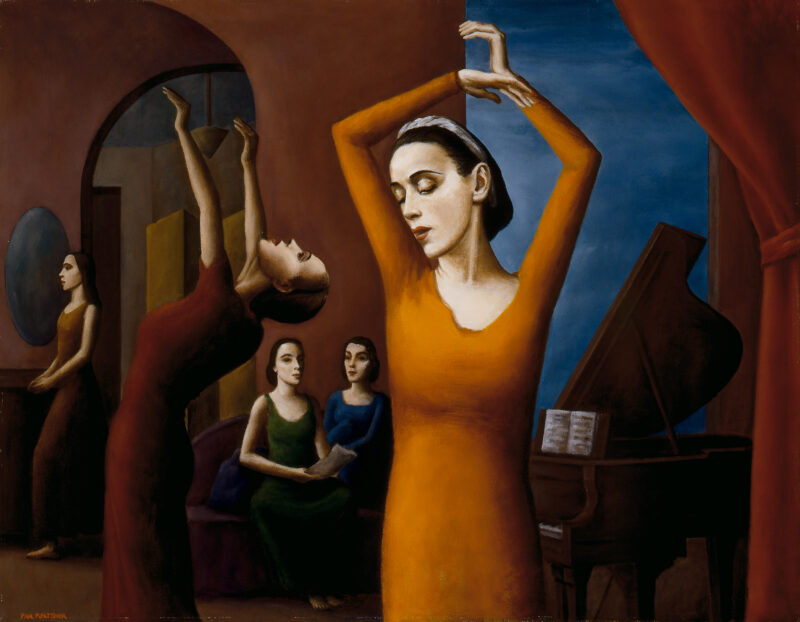
Martha Graham Dance Class
Meltsner, Paul R.
about 1939
Artwork Information
-
Title:
Martha Graham Dance Class
-
Artist:
Meltsner, Paul R.
-
Artist Bio:
American, 1905–1966
-
Date:
about 1939
-
Medium:
Oil on canvas
-
Dimensions:
28 x 36 1/8 inches
-
Credit Line:
Wichita Art Museum, Museum purchase, Virginia and George Ablah Fund
-
Object Number:
1981.9
-
Display:
Currently on Display
About the Artwork
Born in New York City, Paul Meltsner studied at the National Academy of Design and was a member of the Society of Independent Artists. In the 1920s and early 1930s, he produced still-lifes, rural views, and paintings of labor and industrial life. Later in the decade, Meltsner shifted his energies to portraying Broadway celebrities such as Carmen Miranda, Lynn Fontanne, and Gertrude Lawrence. His favorite subject was Martha Graham, whom Meltsner painted on at least three occasions.1
Martha Graham was a pioneer in the art of modern dance. Rejecting the balletic forms and decorative theatricality of traditional dance, she shocked her audiences with harsh, angular movements and stark costumes and sets. Graham sought to distinguish American dance from the European tradition, and often explored specifically American themes such as westward expansion and the pioneer spirit. Not surprisingly, Graham was recognized internationally as the most influential American dancer and choreographer of the 1930s and 1940s.
Meltsner’s Martha Graham Dance Class celebrates Grahams pioneering role in the modern dance movement. Graham occupies a dominant, vertical position in the foreground. Strongly lit and wearing a sleek, brightly colored garment, Graham stands apart from a group of students in the dark background. She strikes a characteristic pose, with arms stretched overhead in a bent, angular position.
Meltsner’s portraits of Martha Graham garnered considerable critical attention, and they were exhibited in significant exhibitions such as the Golden Gate International Exposition of 1939, the Corcoran Biennial Exhibition of 1939, and the Pennsylvania Academy of the Fine Arts Annual Exhibition of 1941. Interestingly, in 1940, an American collector presented one of the Graham portraits to the National Museum of Argentina as a good will gesture on behalf of the United States.2
In the 1940s and 1950s, Meltsner produced urban scenes in a looser, more painterly style. During this period, Meltsner was also instrumental in raising money for war bonds through the sale of his pictures. Meltsner eventually settled in Woodstock, New York, where he died in 1966.
1. “Paul Meltsner Turns His Eyes to Broadway,” Art Digest 14 (1 March 1940): 7.
2. “Buenos Aires: Gift of a Meltsner Canvas,” Art News 39 (7 December 1940): 14.